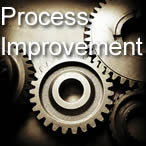Financial Ratios – Efficiency Ratios
In an earlier blog (Financial Ratios – Profitability Ratios), I spoke about the importance of Profitability Ratios. In this blog, I highlight the importance of Efficiency Ratios.
In simple terms, Efficiency Ratios measure how well companies utilise their short term assets and short term liabilities to generate income. Efficiency ratios, for example, might include the time it takes for companies to collect cash from customers, how quickly or slowly they pay their suppliers and the time it takes to convert inventory into revenue.
While Efficiency Ratios are generally used by management to help improve the company, they are also often used to inform outside investors and creditors of the operational performance of the company.
Let’s consider a couple of examples of Efficiency Ratios:
Debtor Days tells you how many days it takes for the money to reach your bank account after you have issued invoices. The lower, the better. A decrease in the ratio is good; an increase should be regarded as an alarm bell.
Debtor Days = Debtors (Net of GST) / Annual Sales x 365
Creditor Days represents the average time that a business takes to pay its Creditors. The higher, the better.
Creditor Days = Creditors (Net of GST) / Annual Cost of Goods Sold x 365 Read more →









